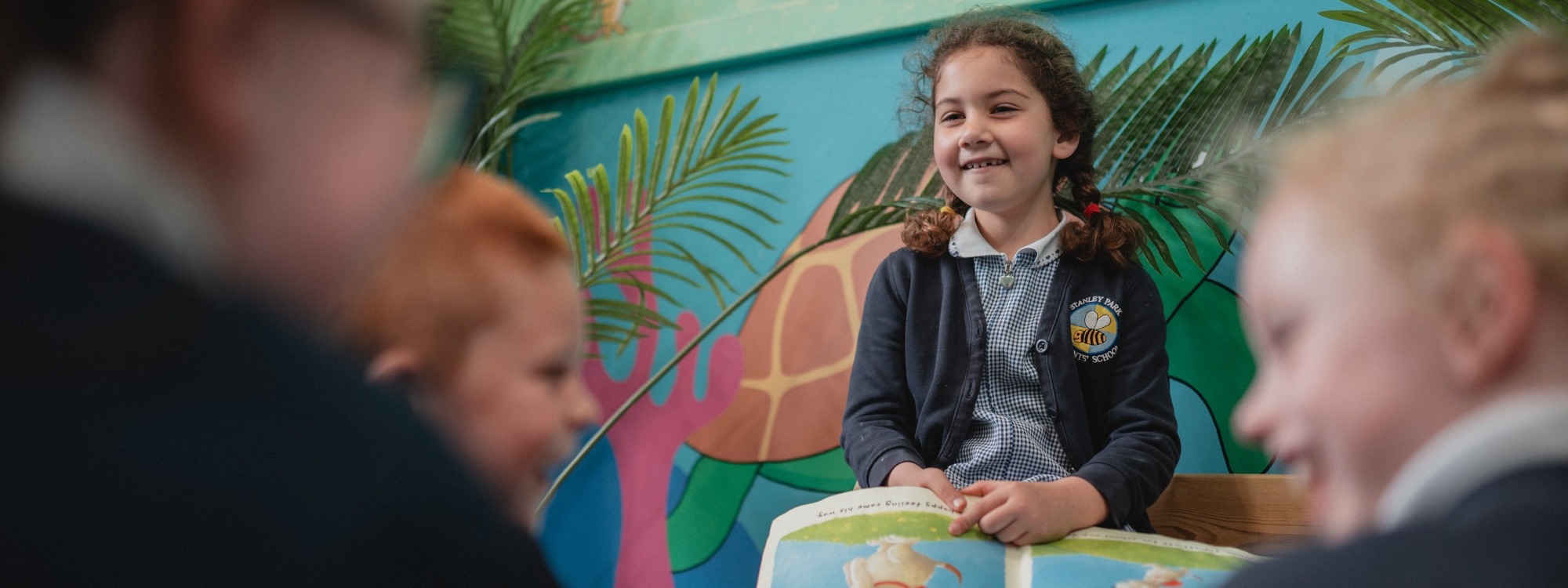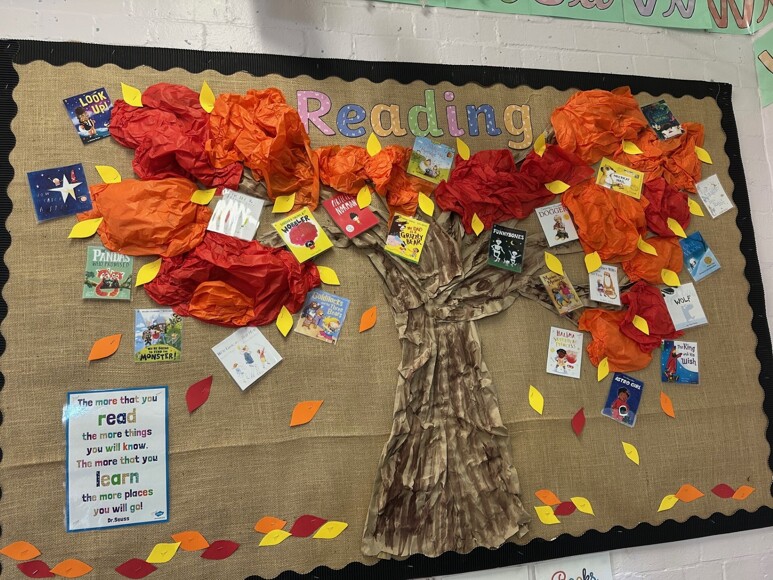- Home
- Learning and Curriculum
- Curriculum Overview
- English
English
Subject Lead: Miss Holly McGowan
At Stanley Park Infants’ School, we see English as a vital life skill and the foundation for all learning. Through a rich and engaging curriculum, we support children to become confident readers, writers, and communicators. Reading is central to our approach, and children are encouraged to develop a love of books by exploring a wide range of texts. They learn to read fluently, understand new vocabulary, and enjoy discussing stories, poems, and information books with others.
We provide regular opportunities for children to write with purpose and creativity, helping them to express their ideas clearly and confidently. Writing is taught alongside a strong foundation in phonics, delivered through a structured and systematic programme. Across all areas of English, we aim to equip children with the skills they need to communicate effectively and enjoy learning through language.
Explore the links below to learn more about the different areas of our English curriculum.
National Curriculum and Progression Planning
National Curriculum
Teacher Assessment Framework for Key Stage One
Early Years Long Term Progression Planning
Nursery Literacy Progression Map
Reception Literacy Progression Map
Cirrus Trust Long Term Progression
CPAT-Progression-Map-for-english reading
CPAT-Progression-map-for-english-writing
Whole School Writing Planning
Handwriting Policy
Reading
Subject Lead: Miss Holly McGowan
At Stanley Park Infants’, we value reading as a key life skill. By the time children leave us, they should be confident selecting and reading a wide range of material and enjoy regularly reading for pleasure. Our readers are equipped with the tools to tackle unfamiliar vocabulary and material. They can recommend books to their peers and enjoy reading a wide range of genres, including non-fiction. Children enjoy participating in discussions about books and learn many off by heart.
We use a variety of reading materials and schemes (including RWINc, Bug Club and class Kindle books) to support children with their reading.
How we teach Reading
We teach reading in several ways:
- Opportunities to read for pleasure
- Daily phonics sessions
- Phonics in small groups or interventions
- Fast track tutoring (RWINc interventions)
- Storytime timetabled for fifteen minutes daily
- Regular, open ended discussions about stories and books
- Opportunities to read and discuss a wide read of genres including poetry and non-fiction
- Specific teaching of reading comprehension skills including answering retrieval and inference questions – using RWINc Comprehension schemes
We also have a number of reading enrichment activities, including:
- Visits from authors and poets throughout the school year.
- Celebrations for our school Book Week including ‘Books Before Bedtime’, competitions and lots of amazing costumes!
- World Book Day
- Cirrus Trust Poetry Competition
- Library sessions
- KS1 weekly book club
In addition, 1:1 interventions are put in place for children that need extra practise.
Children will read to their class teacher at least once a week.
Books that the children take home are carefully chosen to match the children’s reading abilities.
Reading for pleasure
At SPIS, reading for pleasure is strongly encouraged, and children engage enthusiastically with a wide variety of texts. Each classroom proudly displays the book they are currently reading on their door, gradually creating a visual library of the texts explored throughout the year. Every year group follows a carefully curated ‘Reading Spine’ - a diverse and high-quality collection of stories, poems, and non-fiction texts. These selections expose students to a range of genres and rich language, nurturing a lifelong love of reading while expanding their vocabulary and understanding of the world. The 'Reading Spine' is displayed in each classroom. We also have a wide variety of inclusive books in the library and in every classroom to ensure all children are represented in books that they read.
45 books to read before Year 3
This is a list of 45 highly recommended books, to be enjoyed before your children transition to Year 3. This diverse collection has been carefully selected to inspire a love of reading while supporting literacy development across various skill levels.
The list includes books suitable for a wide range of abilities and contains varied vocabulary to enrich your child's language skills. These books cover a mix of genres, themes, and styles, ensuring there’s something to captivate every young reader. From beloved classics to engaging contemporary stories, each title has been chosen to spark imagination, foster empathy, and build confidence and a love of reading.
45-books-to-read-before-Yr3.pdf
Learning Environment
At Stanley Park Infants' we pride ourselves in our stimulating and immersive learning environment to enhance children's love of stories and encourage them to grow up into lifelong readers. Above shows some photographs of our reading area's to give children a calm and cosy place to enjoy books with their peers. Children are able to choose from a wide range of fiction and non-fiction books, including picture books, chapter books, short stories, poetry books, fact books, science magazines and many more.
Book Week
Each year at SPIS we have a special week dedicated to our love of reading to share and promote reading for pleasure among our children. Last year our theme was 'Reading is Magical' with a focus on magical book characters.
Book week consists of:
- Book character scavenger hunts
- Whole school reading carousels
- Author visits
- Dress up day
- Bringing in favourite stories
- Book character quizzes
- Book related activities in class
- Book fair
Our biggest celebration in Book Week is always Books Before Bedtime. Children are invited back to school in the evening in their pyjamas to listen to some bedtime stories with their teachers whilst enjoying some treats and chocolate milk. Then our teachers put on a show of a well known story, last year we chose 'Goldilocks and the Three Bears', with an eco themed twist! It was such a special event and always lots of fun.

Reading communities:
- Participation in local reading competitions including the summer reading challenge
- Visits to the school library every week
- Book fairs
- Participation in World Book Week dress up and enrichment events based on the national theme
- Reading buddies- teaming up older and younger classes to share favourite books together
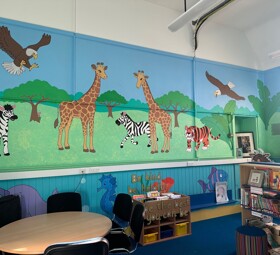
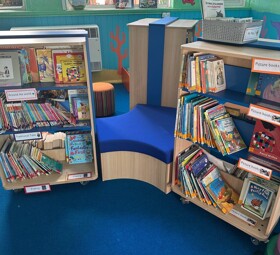
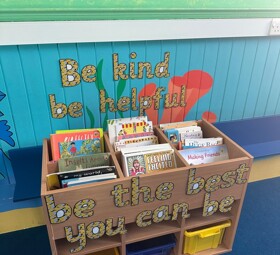
Reading environments and choice:
- An engaging, clearly labelled, tidy book corner with a range of classic and new, high-quality fiction and non-fiction texts.
- Advice on how to choose a book that they will like and exposure to new authors and genres.
- Time every week to choose a book and read for pleasure.
- Dedicated time each day where an adult will read to them.
- Time each week to read to an adult and other children in the classroom.
- Daily opportunities to engage in quality book talk.
Author visits/ Workshops:
- Regular author/ storyteller visits - every child will access at least one author event per year.
Teacher Commitment:
- Teachers who have regular training sessions and are kept up to date with pedagogical developments.
- Enthusiastic teachers with good knowledge of children’s books and enjoy participating in book talk.
- Teachers who are motivated and participate wholeheartedly in reading enrichment activities such as World Book Day.
- Teachers who model the love of reading!
Phonics
Subject Lead: Miss Holly McGowan
At Stanley Park Infants, we believe that for children to become confident and fluent readers and writers, phonics must be taught through a systematic and structured programme.
Research shows that when phonics is taught in a structured way, starting with the easiest sounds and progressing through to the most complex, it is the most effective way of teaching young children to read. DfE, 2013.
How we teach Phonics
Our phonics lessons are delivered by highly skilled practitioners using the Read Write Inc. (RWInc) systematic synthetic phonics programme. We ensure full coverage of all phonemes as outlined in the RWInc framework. Children in both EYFS and Key Stage 1 receive engaging, interactive, and practical daily phonics lessons.
In Nursery, we begin with early phonics skills, focusing primarily on developing children's speaking and listening abilities. Through a range of practical activities, games, songs, stories, and rhymes, children explore environmental and voice sounds, rhyme, rhythm, and alliteration. By the end of the year, we aim for all children to be confident in oral segmenting and blending, preparing them for learning Set 1 sounds.
In Reception, children begin learning the phonemes in Set 1 of RWInc. Each phoneme is taught with an accompanying rhyme and corresponding grapheme (e.g. d – dinosaur, f – flower). Children also learn how to form each grapheme using handwriting rhymes (e.g. f – “down the flower and give it a leaf”). They practise blending these phonemes to read simple words and segmenting words into their individual sounds when spelling (e.g. c-a-t, b-e-ll, s-o-ck). Once confident with Set 1, children move on to Set 2 and 3 phonemes. During this phase, they learn that sounds can be represented by two or three letters - digraphs and trigraphs (e.g. f-or-k, h-igh). They continue to develop their segmenting and blending skills for both reading and writing.
As they progress, children deepen their understanding of grapheme-phoneme correspondences, including learning alternative pronunciations for the same grapheme (e.g. ow – brown cow and ow – blow the snow). They are also introduced to phoneme families, encountering new graphemes for familiar sounds (e.g. ay – may I play?, ai – snail in the rain, a-e – make a cake).
Children continue learning these phonemes until they are secure in all RWInc Set 1, 2, and 3 sounds. Every child progresses at their own pace and is grouped according to their ability. They work through the ditty book colours - from Red to Grey. After completing the Grey ditties, children move into the RWInc Comprehension group. Progress is assessed every half term.
At SPIS, we also model phonics strategies in shared reading and writing, both within and beyond phonics lessons, across the curriculum. We place a strong emphasis on developing language because we know that speaking and listening are crucial skills for reading and writing success in all subjects.
At SPIS we:
- Teach children that phonics helps us to read and write.
- Use the Read Write Inc scheme to teach the phonemes and graphemes involved in phonics, including the associated pictures and rhymes.
- Include an active element to all lessons that ensures participation for all learners.
- Teach Phonics in small groups which are streamed from Reception - Year 2
- Regularly assess children’s phonics knowledge to inform our planning and teaching.
- Use decodable books that are linked to their phonics knowledge so that children can directly apply their new knowledge and phonic skills at an appropriate level. (RWInc Ditty Books and RWInc Book Bag Books)
- Invite all parents to attend phonics, reading and writing workshops to support their children with the development of their child’s phonics skills.
How can I support my child at home?
- We encourage daily reading and reading for pleasure.
- Help your child to use the Read Write Inc rhymes to remember the phonemes they have learnt and how to form their letters.
- Practise segmenting and blending a range of words with your child to help their fluency in decoding texts.
- Ask your child questions related to the story to check their comprehension and understanding of the text.
Reading Books
From Reception onwards, children take home both a Ditty Book and a Book Bag Book, carefully matched to their current phonics attainment. Teachers and Teaching Assistants assign books based on regular assessments and ongoing monitoring.
Children are expected to be able to read their phonetically decodable Book Bag Book and Ditty Book independently. In addition, they may also choose a 'reading for pleasure' book from our school library to enjoy at home.
To learn more about the Read Write Inc. scheme and how you can support your child at home, please see the information below.
Writing
Subject Lead: Miss Holly McGowan
At Stanley Park Infants’ School, we strive to ensure that every child is a confident and fluent writer. As writing is a key life skill, we promote daily writing opportunities so that children can successfully write for a range of audiences and purposes.
How we teach Writing
At Stanley Park Infants, our writing curriculum is closely linked to the books we read in class. We follow the Talk for Writing scheme, which immerses children in stories and supports them in becoming independent and confident writers.
There are three main phases in the Talk for Writing approach:
1. Imitation – This phase begins with a creative hook to engage the children. They are introduced to new stories, which they learn off by heart through drama (e.g. hot seating), story maps, and boxing-up activities.
2. Innovation – Children use the basic structure of the original story to develop their own ideas. They create new story maps and boxing-up plans and take part in shared writing sessions.
3. Independent Application – Children independently write their own stories or other pieces of writing. They have opportunities to read or perform their work, publish it, and read each other’s writing.
In the early stages of writing, phonics plays a key role. Children are taught to apply their phonics knowledge to spell words accurately and confidently.
We also use Colourful Semantics to support children’s understanding of sentence structure and coherence. Children learn the essential components of a sentence, including capital letters, finger spaces, and full stops. These success criteria are clearly shared and rehearsed through actions so that children know what makes a sentence successful. Using picture prompts, children identify ‘who’ is in the picture and ‘what’ they are doing, then use this to write simple, coherent sentences.
Imagination is encouraged and nurtured through descriptive writing activities, and children are exposed to a vocabulary-rich environment that is reflected in the quality of their writing. Grammar and vocabulary are taught explicitly and embedded into writing lessons.
Children are encouraged to be word collectors, noticing and using interesting vocabulary in their own writing. Writing tasks are often given a meaningful purpose, such as writing a letter to a local MP, which helps to motivate children and provide context.
Handwriting
Handwriting is an essential component of writing and is taught alongside composition with daily 15 minute sessions.
- In Reception, the focus is on pencil grip, correct positioning, and basic letter formation.
- In Year 1, children work on forming letters correctly and learning appropriate letter sizing.
- Towards the end of Year 1, children are introduced to lead-in and lead-out strokes to prepare for cursive writing in Year 2.
We use Read Write Inc. handwriting rhymes to support the teaching of correct letter formation.
Spelling
In Key Stage 1, Spelling Shed is used to teach common exception words and spelling rules. Weekly spellings are set on the platform, and children are encouraged to play interactive games to support retention. Spelling is taught through focused lessons, supported by flashcards and regular revision, following a structured approach similar to phonics.
Celebrating Writing
Writing is celebrated at SPIS and regularly shared within the classroom. Children are chosen at random to read aloud their work, and they often swap books to give peer feedback, offering praise and constructive advice.
We also encourage children to reflect on their progress by reviewing previous pieces of writing. Any ‘WOW’ pieces are photocopied and proudly displayed around the classroom, showcasing the children’s hard work and creativity.

